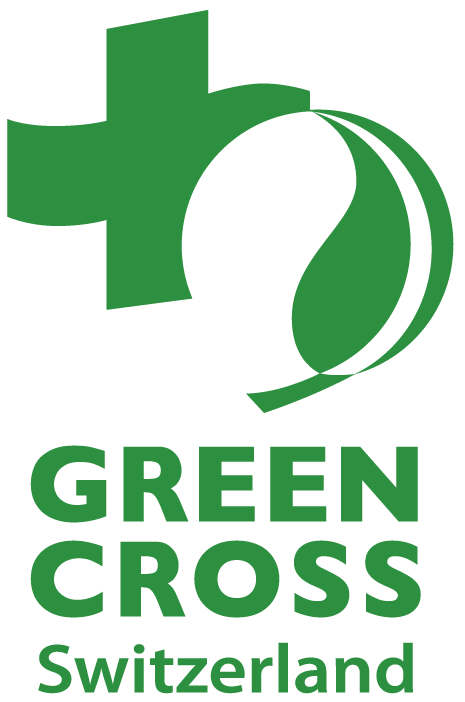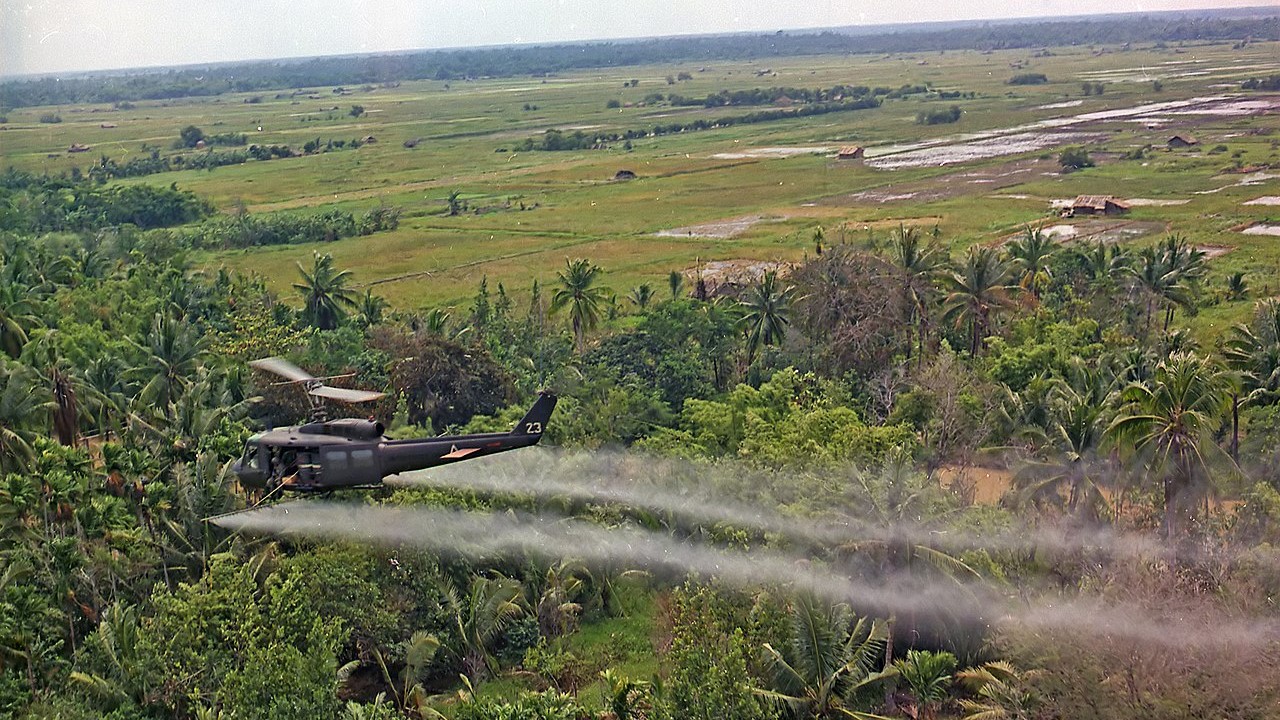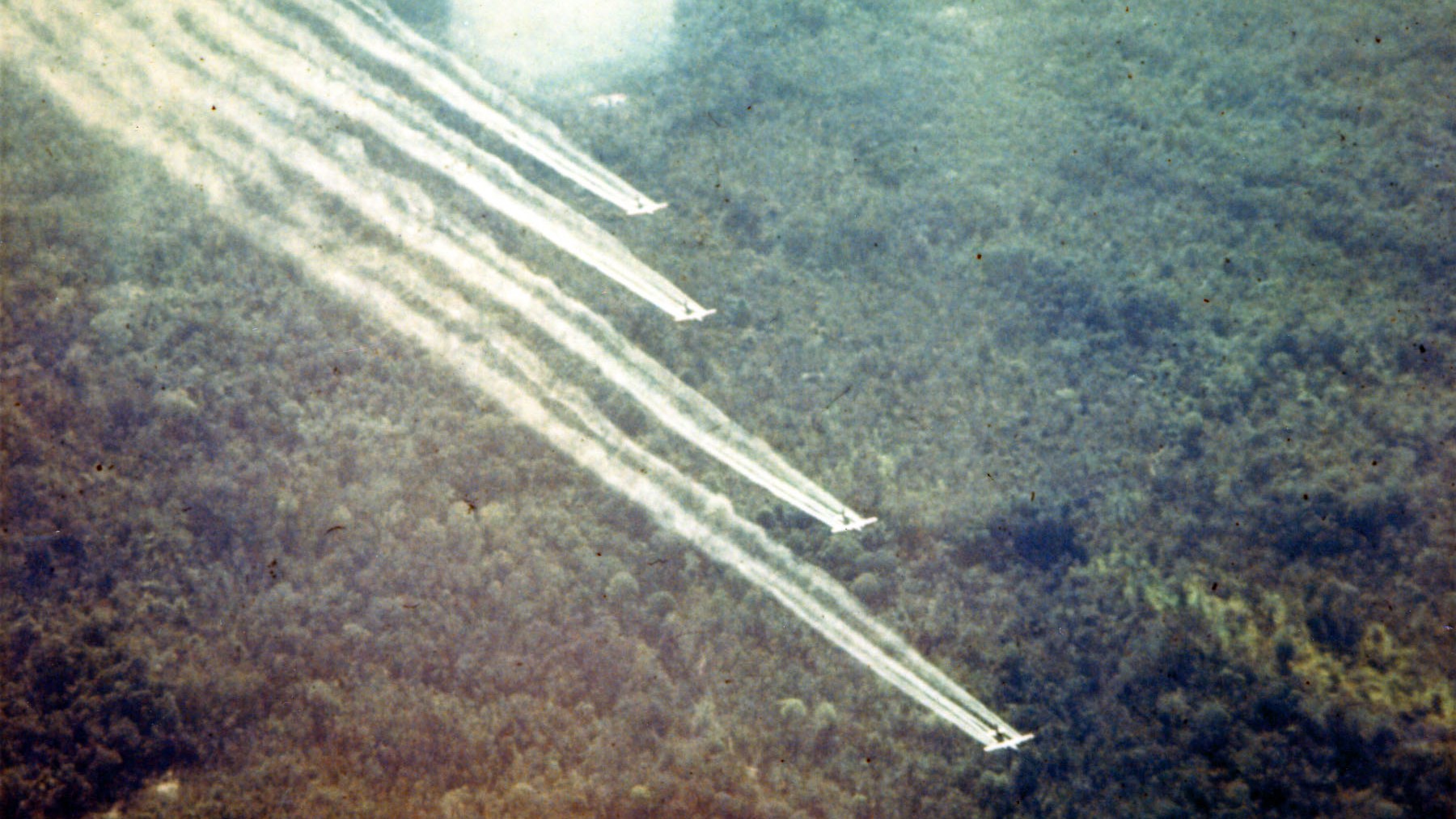Agent Orange
The fatal use of a defoliant
Shortly after Vietnam’s independence from the colonial power of France in 1954 in the Indochina War, the country split into North and South Vietnam and a subsequent civil war was unleashed. At the beginning of the 1960s, the civil war increasingly developed into a proxy war in the Cold War; the North was supported by the USSR and China, while the South received backing from the USA. The latter feared the so-called “domino effect,” i.e., the increasing orientation and adoption of communism by East Asian countries.
As a result, the U.S. began to intervene directly in Vietnam. This intervention was to last for years; the United States, but also supporting states such as Thailand, Australia, Philippines, etc., tried in vain to break the resistance of the North by sending ground troops, bombing but also indirectly by using herbicides.
From 1962 to 1971, the defoliant “Agent Orange” was used by the U.S. Army; the name came from the orange identification stripes on the 55-gallon drums in which it was stored. On the one hand, it was intended to defoliate the jungle to uncover North Vietnamese Army hideouts, and on the other hand, to destroy crops that could feed army personnel. Agent Orange, however, had an aggressive effect on those affected and on the local environment, which can still be felt today. The fact that areas are still struggling with contamination today is not due to the pesticides that made up Agent Orange. On the contrary, the agents stimulate plant growth and the half-life is only a few days or weeks. The real danger to humans and the environment is a byproduct potentially produced during the manufacture of the trychlorophenoxyacetic acid (chemical compound). It is called tetrachlorodibenzodioxin (TCDD) and the compound is the most toxic of all dioxins (unwanted byproducts found mainly in combustion processes). Even small amounts can cause cancer, organ damage or malformations in children. Among Vietnamese, exposure to Agent Orange is accordingly considered to be the cause of an unusually high number of miscarriages, skin diseases, cancers, birth defects, and congenital malformations that have occurred since the 1970s.
The Vietnamese Association of Victims of Agent Orange estimates that there are more than three million victims of Agent Orange, and hundreds of thousands of Vietnamese and U.S. military personnel are suffering from the long-term effects of the herbicide. The U.S. has so far made only small contributions to improving the situation; its support is primarily directed at its own veterans.
Green Cross Switzerland and Agent Orange
Green Cross Switzerland began implementing aid projects in Vietnam in 1998. The commitment was focused on different priorities at an early stage. Green Cross Switzerland built up an information and prevention program for affected persons, but also for the Vietnamese public, within the framework of the SOCMED program starting in 2001. It also began supporting the Vietcot, which was founded in 1997. The Vietcot is a training and further education institution for orthopedic technicians and also treats children who need orthoses or prostheses on site. The Vietcot training center is now officially recognized as part of the country’s education system. Green Cross continues to support the training of as many orthopedic specialists as possible with scholarships. In addition, Green Cross Switzerland cooperates with various health facilities and day care centers that strengthen structures to provide medical, psychological and social support to those affected by Agent Orange, especially those from poorer backgrounds, with little administrative effort.
In cooperation with Green Cross Switzerland, the two doctors Dr. Daniel Hueskes and Dr. Claude Müller, together with other experts from Switzerland, travel to Vietnam twice a year and provide on-site assistance with their expertise (e.g. at the Vietcot).
More details of our work in Vietnam can be found here.
You can find further information here:
Agent Orange (information website)
Agent Orange (compact representation of the defoliant)
Das Gift, das bleibt (conclusive article with background information)
Poison use in the Vietnam War – Agent Orange and the consequences until today (Podcast)
«Ich wollte unbedingt kämpfen und der Wunsch wurde mir erfüllt» (Podcast)
References
Frey, Marc: History of the Vietnam War, 2022.
Jaeggi, Peter: War Without End. Late effects of the Vietnam War Agent Orange and other crimes.
Martini, Edwin E.: History, Science and the Politics of Uncertainty, 2012.
Ward, Geoffrey C.; Burns, Ken: The Vietnam War. An Intimate History, 2019.


